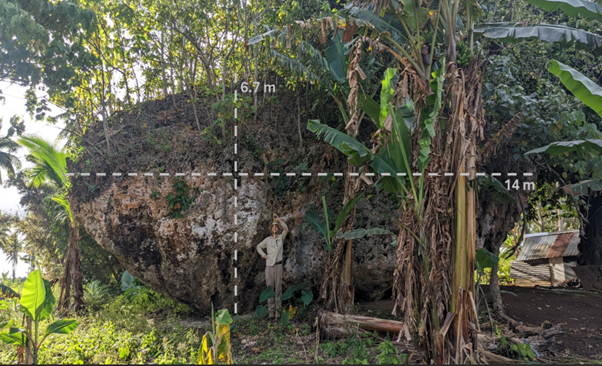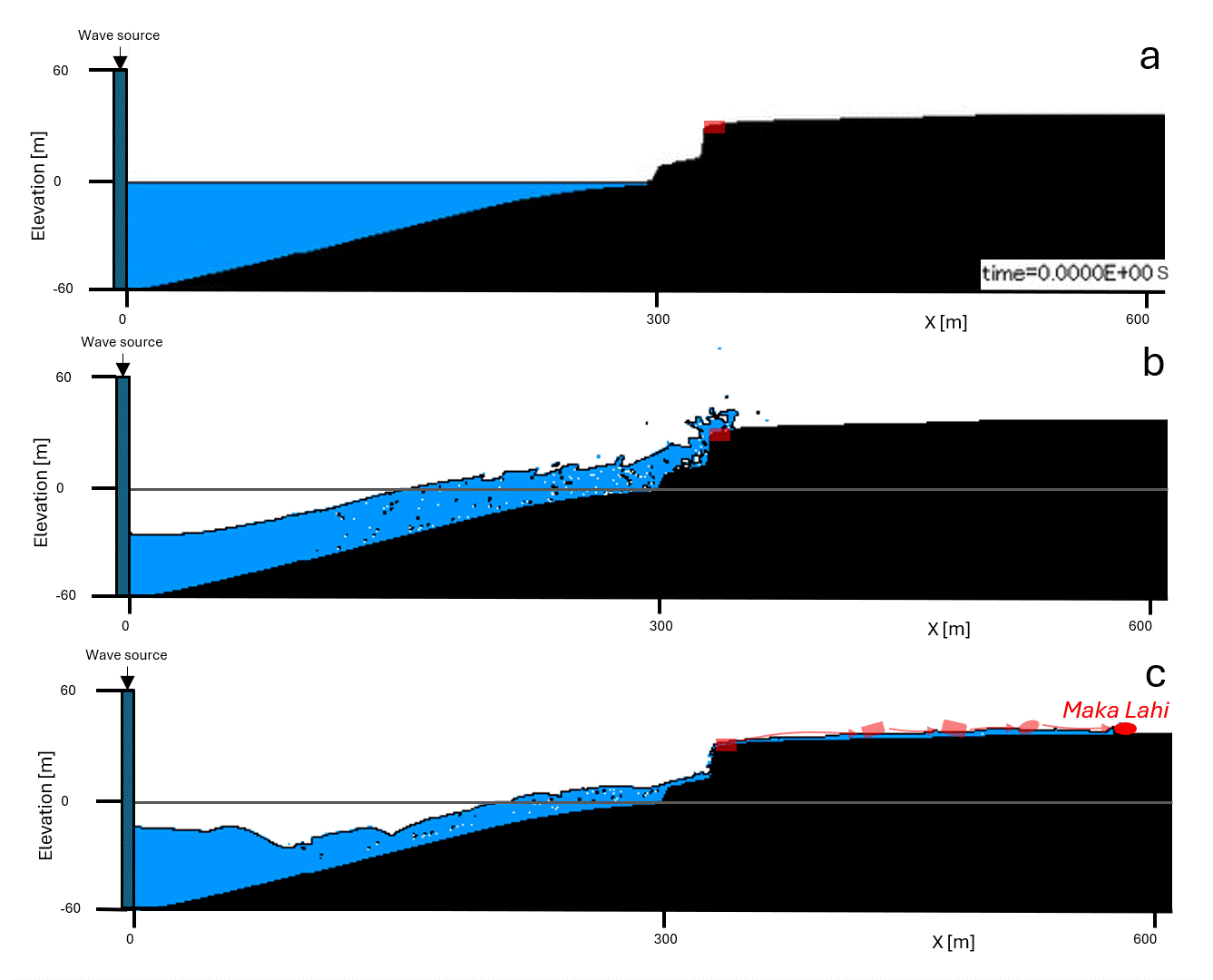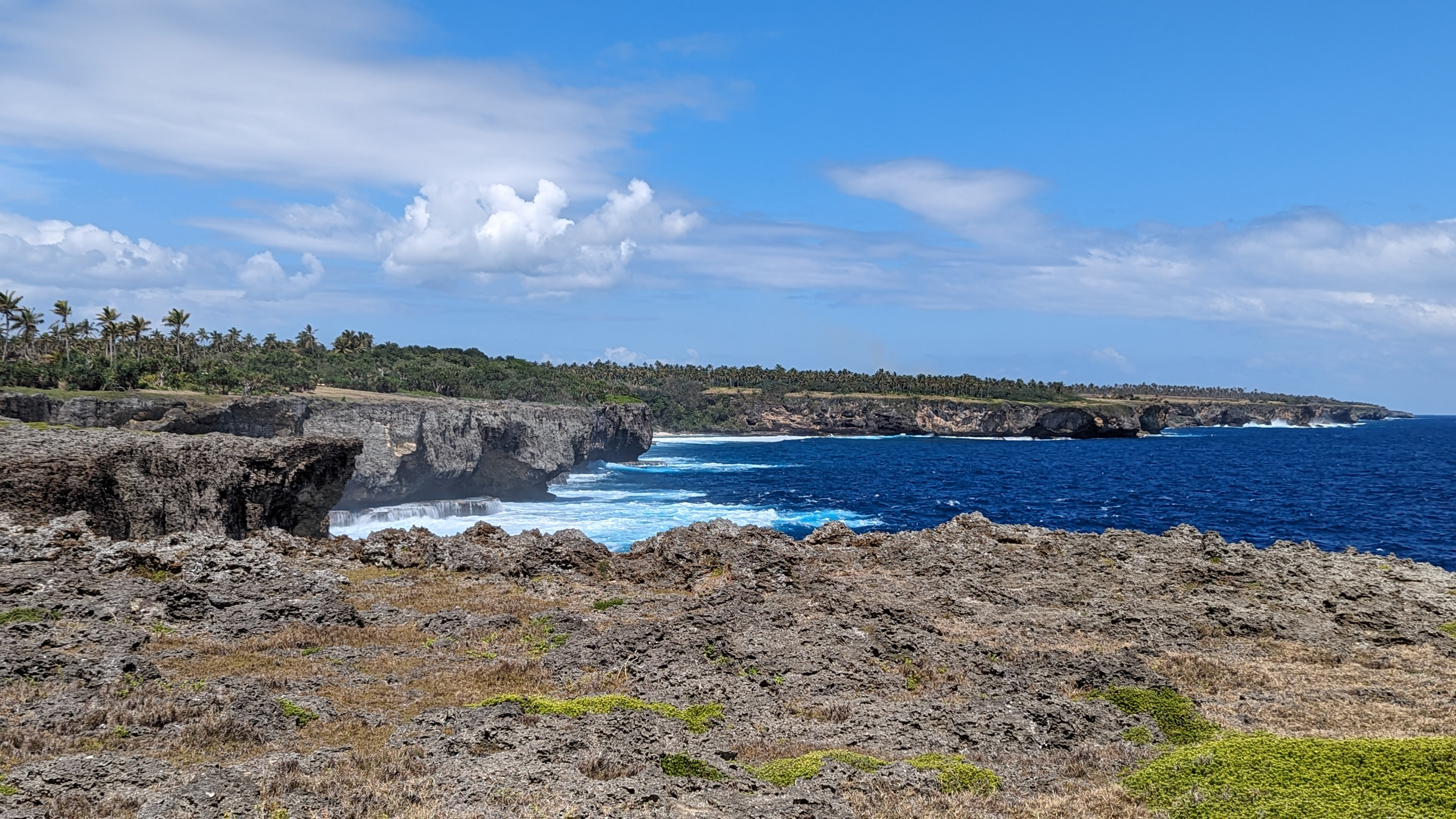Somewhere around 7,000 years ago, a tsunami struck the southern edge of Tongatapu, picked up a giant boulder, and slid it 200 meters (700 feet) inland. That’s remarkable, but we’ve found other huge boulders moved by waves. This boulder, however, started off on top of a 30 meter (100 foot) high cliff, beyond the reach of normal sized tsunamis.
In earthquake-prone parts of the world, seashores often host boulders that did not form there. Two hundred years ago, their presence might have been attributed to Noah’s flood, but now we know they’re the result of tsunamis that can carry even large rocks to surprising places. By studying these boulders, geologists hope to learn how large and how frequent such tsunamis can be, which is essential for future planning.
Martin Köhler is a PhD student at the University of Queensland who was part of a team surveying Tonga’s cliffs seeking such examples when they were told about one in a place they would not have normally looked.
“It was late in the day, and we were talking to some farmers when they directed us to this boulder,” Köhler said in a statement. “I was so surprised; it is located far inland outside of our field work area and must have been carried by a very big tsunami. It was quite unbelievable to see this big piece of rock sitting there covered in and surrounded by vegetation.”
The team made a model of the boulder to estimate its size and mass, concluding it is 14 by 12 by 6.7 meters (45x40x22 feet), or roughly the size of a typical two-storey house in a wealthy country. Houses, however, are not solid rock and therefore much lighter.

Maka Lahi with measurements marked on, and a human for scale.
Given its composition, the boulder, named Maka Lahi by the local population, would weigh 1,180 tonnes. A tornado might pick up a house, Wizard of Oz-like, but would be utterly defeated by Maka Lahi. To move it, nature needed the denser medium of water.
Even more amazingly, when Köhler and colleagues traced the boulder’s origin, they found it had started atop a cliff so high ordinary tsunamis wouldn’t get over it, let alone have enough force to move something large.
Modeling suggests it would take waves 50 meters (170 feet) high and lasting 90 seconds to move Maka Lahi so far. This is substantially larger than the largest tsunami wave height ever measured, and far above any calculated based on impact during the Holocene. (Note, tsunami wave heights are different from their run-up heights, which can be far larger).

Modeling of the sort of wave required to move a boulder this big.
As co-author of the report on Maka Lahi Dr Annie Lau noted, “Tonga’s most recent tsunami in 2022 killed six people and caused a lot of damage.” The death toll would have been orders of magnitude higher had not the resorts that suffered the main blow been closed by COVID. Knowing how often to expect such events is crucial.
The good news is that the tsunami that moved Maka Lahi was at least 6,891 years ago. Köhler told IFLScience, “rain causes secondary limestone to form on the sides, and we can date those layers.” The limestone could not have been formed at its previous location, both because salt spray closer to the ocean inhibits formation and because the orientation of the boulder causes the limestone to form in distinctive ways. Köhler added that “’limestone would also get scraped off when transported.” Tsunamis are not gentle carriers, and anyone dumped by an ordinary ocean breaker can probably relate.

You’d think on top of cliffs like this you’d be safe from waves, particularly if you weigh a thousand tonnes.
Maka Lahi was once part of the cliff, Köhler told IFLScience. “Cracks in the rock formed and rainwater widened them until it was loose before the tsunami moved it inland.”
Köhler added that the tsunami came from the south, probably caused by a volcano’s flank collapsing during an eruption, but the team have yet to identify the exact source. They hope surveys of the sea floor will provide the answers.
One slightly larger boulder on Tongatapu, Maui Rock, has also been identified as having been moved by a tsunami. However, Köhler told IFLScience this was on the west side of the island, and had started on a much lower cliff before being moved a shorter distance inland. It could therefore have been moved by a tsunami about a quarter as high. That event, however, was only around 500 years ago, suggesting Tonga is not only vulnerable from all sides, but can’t rely on millennium-long gaps between dangerous events.
A larger boulder in Japan, Obiishi, is also much closer to sea level and required a much smaller tsunami to move.
Tongans refer to these boulders as “Maui throwing stones”, after a myth they were hurled by the demi-god Maui while chasing chickens. Yes, that Maui.
The study is open access in Marine Geology.
Source Link: World’s Largest Cliff-Top Boulder Was Rolled From 30-Meter-High Cliff By Ancient Tsunami